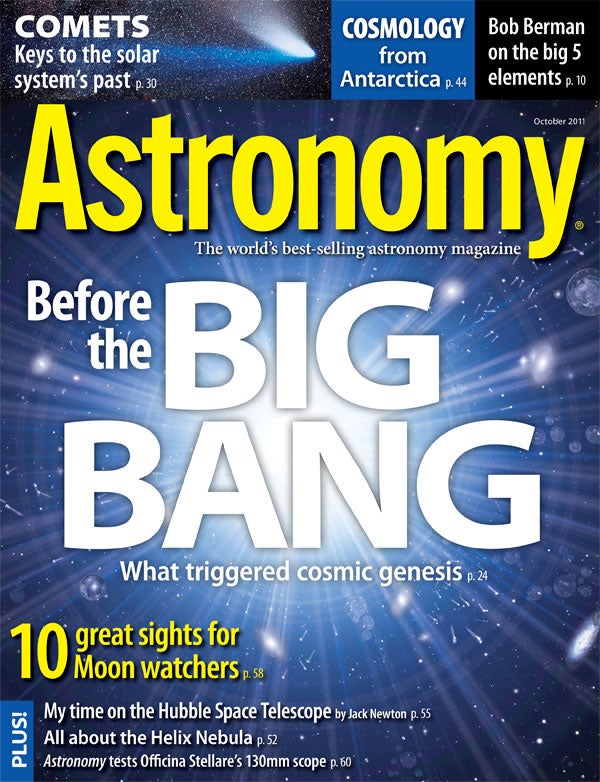
WAUKESHA, Wis. — By now, most of us know about the Big Bang theory, which suggests that everything we see in the universe arose from the sudden expansion of a microscopic point of energy some 13.7 billion years ago. Space and time both began at that moment, so asking what happened before was long considered pointless. Not anymore.In “What triggered the Big Bang?” science writer and frequent Astronomy magazine contributor Bruce Dorminey takes a look at three emerging theories of what could have happened before our universe began. The first is “eternal inflation,” where large pockets of space-time pop out of nothingness; the second is a cyclic model that explains the universe’s origin as the collision between two parallel “membrane-like” worlds; and third is an “infinite loop of quantum cosmology” concept that continually recycles the universe.Dorminey explains each possibility carefully and clearly, leaving even the most cosmologically challenged reader with a good understanding of the theories. More difficult, of course, is finding evidence supporting any of them, which scientists can also struggle with. It may be a while before the issue is permanently settled, but they have made progress. “We have not claimed definitive evidence for anything yet,” Matt Johnson of Canada’s Perimeter Institute for Theoretical Physics tells Dorminey, “but we have simply found some intriguing hints.”Pick up the October issue of Astronomy, on newsstands September 6, to learn more about what may have preceded the Big Bang and what it means for our universe.
“Comets: Keys to the solar system’s past”
Despite their age-old reputation as ill omens and harbingers of doom, comets have proven some of the most fascinating of celestial phenomena. Recent advances in technology have made possible not just better observations of these dirty snowballs, but also the ability to study them up close with spacecraft. Join the principal investigator behind some of these missions, Michael A’Hearn, as he describes the history, characteristics, and significance of the frozen travelers in “Comets: Keys to the solar system’s past.” As A’Hearn writes, “Comets can be tricky,” but “astronomers understand these celestial visitors better than ever before.” Now you can, too.
“10 great features for Moon watchers”
Prepare for a lunar voyage in “10 great features for Moon watchers.” Astronomy Senior Editor Michael E. Bakich crosses the lunar landscape to highlight 10 formations any true Moon fan can’t miss. With craters, domes, seas, and mountains to choose from, the nearby world boasts a dazzling set of natural sights.
“Astronomy tests the Officina Stellare Hiper APO 130”
In “Astronomy tests the Officina Stellare Hiper APO 130,” Contributing Editor Mike Reynolds raves about the new apochromatic refractor from a little-known Italian manufacturer. The scope’s solid construction and stylish design, coupled with its various helpful features, make it a wonderful tool in any astronomer’s arsenal, capable of producing superb images and spectacular sights.
Also in the October 2011 Astronomy
• “How Antarctica unlocks cosmic secrets” — The quest to understand our universe’s earliest moments drives astronomers to Earth’s coldest continent.
• “All about the Helix Nebula” — This planetary nebula offers more than a great view through the eyepiece. It shows astronomers how our Sun’s life will end.
• “My time on the Hubble Space Telescope” — Finding a rare type of supernova was just the beginning of this amateur astronomer’s adventure.
• “The Sky this Month” — Exclusive pullout star charts will guide you through October’s night sky.
• The October issue of Astronomy also includes Astro News, Bob Berman’s Strange Universe, Glenn Chaple’s Observing Basics, David H. Levy’s Evening Stars, Stephen James O’Meara’s Secret Sky, Tony Hallas’ Imaging the Cosmos, Ask Astro, Deep-sky Showcase, New Products, Reader Gallery, and The Cosmic Grid.









